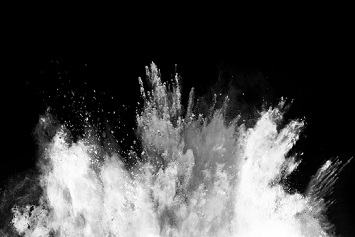On May 31, 2017, a combustible dust explosion at Didion Milling’s corn milling facility in Cambria, Wisconsin, left five workers dead and 1 dozen more seriously injured. In November, the Occupational Safety and Health Administration (OSHA) leveled 14 willful citations—including 8 categorized as “egregious”—and 5 serious citations against the employer, carrying proposed fines of more than $1.8 million. In addition, OSHA placed the employer in its Severe Violators Enforcement Program (SVEP).

Jag_cz / iStock / Getty Images Plus / Getty Images
Is combustible dust an issue at your facility? And what can you do to avoid multimillion-dollar fines and hypervigilant enforcement from regulators?
A Regulatory Smorgasbord
OSHA proposed a combustible dust standard in 2009 but never completed it. As with ergonomics and other hazards whose proposed standards are snarled in the rulemaking process, OSHA has not let the lack of a specific rule prevent it from citing employers that fail to correct recognized hazards. In the case of combustible dust, OSHA uses an assortment of existing standards and a National Emphasis Program (NEP) (created in 2007 and most recently updated in 2015) to cite employers for unabated combustible dust hazards.
- Grain-handling facilities like Didion are covered by 29 CFR 1910.272, which applies to grain elevators, feed mills, flour mills, rice mills, dust pelletizing plants, dry corn mills, soybean flaking operations, and the dry grinding operations of soycake. OSHA also has specific compliance directives that apply to grain-handling facilities in general industry and at marine terminals.
- Other facilities that generate or handle combustible dusts that pose a deflagration or other fire hazard may be inspected and cited as specified in OSHA’s Combustible Dust NEP. Under the NEP, if lab results indicate that dust in the facility is combustible, and accumulations of combustible dust that are not contained within dust control systems or other containers (such as storage bins) are extensive enough to pose a deflagration, explosion, or other fire hazard, OSHA will use its housekeeping standards to issue citations. Employers may be cited under either 29 CFR 1910.22 (housekeeping) or 29 CFR 1910.176(c) (housekeeping in storage areas).
- Where combustible dust hazards exist within dust control systems or other containers, OSHA may issue citations under section 5(a)(1) of the Occupational Safety and Health (OSH) Act (the General Duty Clause (GDC)) for deflagration or other fire or explosion hazards. In order to determine whether a specific combustible dust hazard is recognized and whether feasible abatement methods exist (prerequisites for a GDC citation), OSHA recommends that its inspectors consult applicable National Fire Protection Association (NFPA) standards.
- Facilities covered by the Process Safety Management (PSM) standard (29 CFR 1910.119) may or may not be subject to enforcement under the NEP. It specifically excludes explosives and pyrotechnics manufacturing facilities covered by the PSM standard. However, the NEP does not exclude facilities that manufacture or handle other types of combustible dusts (such as ammonium perchlorate) covered under the PSM standard.
Other standards—generally those having to do with fire prevention in some way—may also be applicable to combustible dust hazards. For example, a workplace that has a Class II location, and combustible dusts may be cited under 29 CFR 1910.307, Hazardous Locations, if their electrical equipment does not meet the requirements of that standard.
